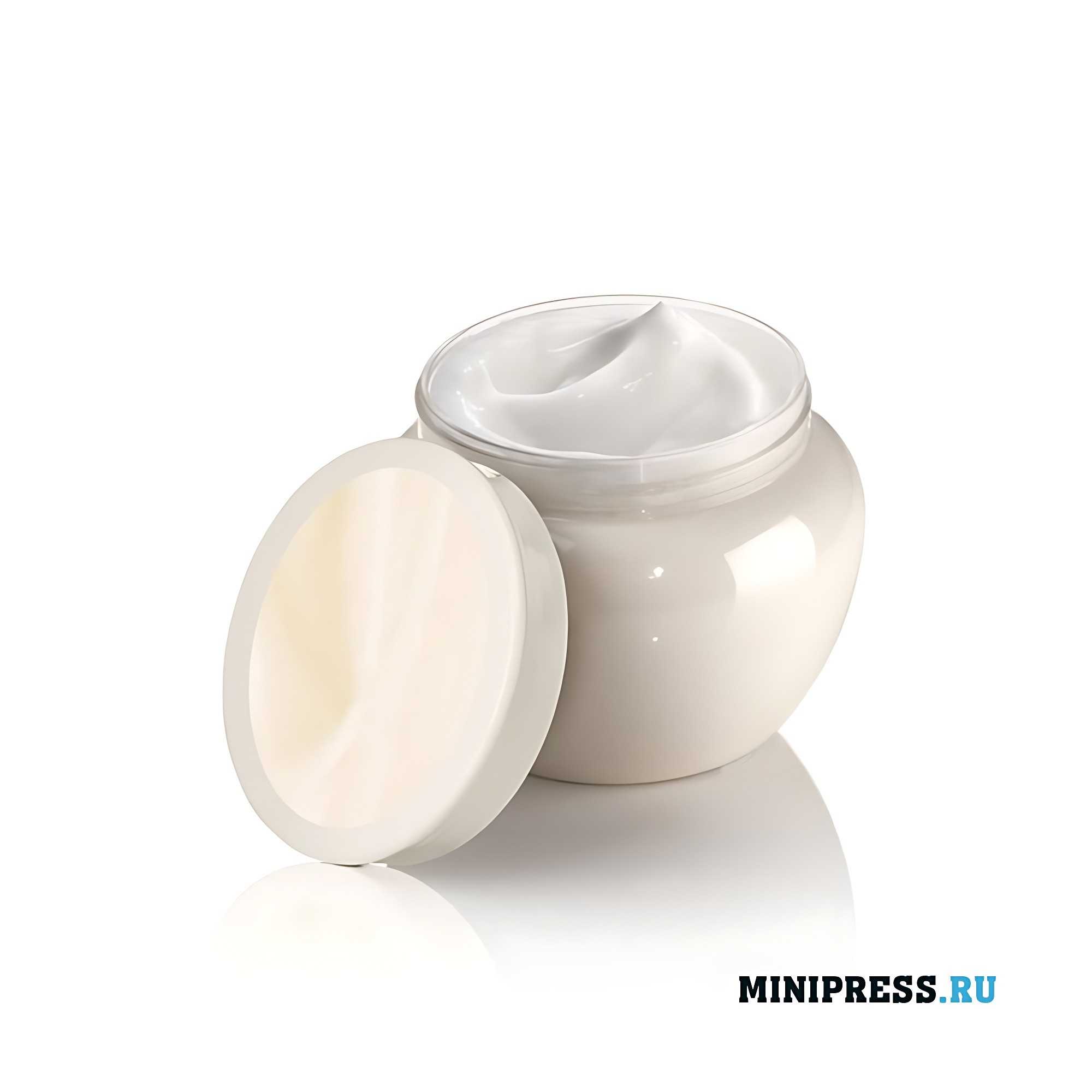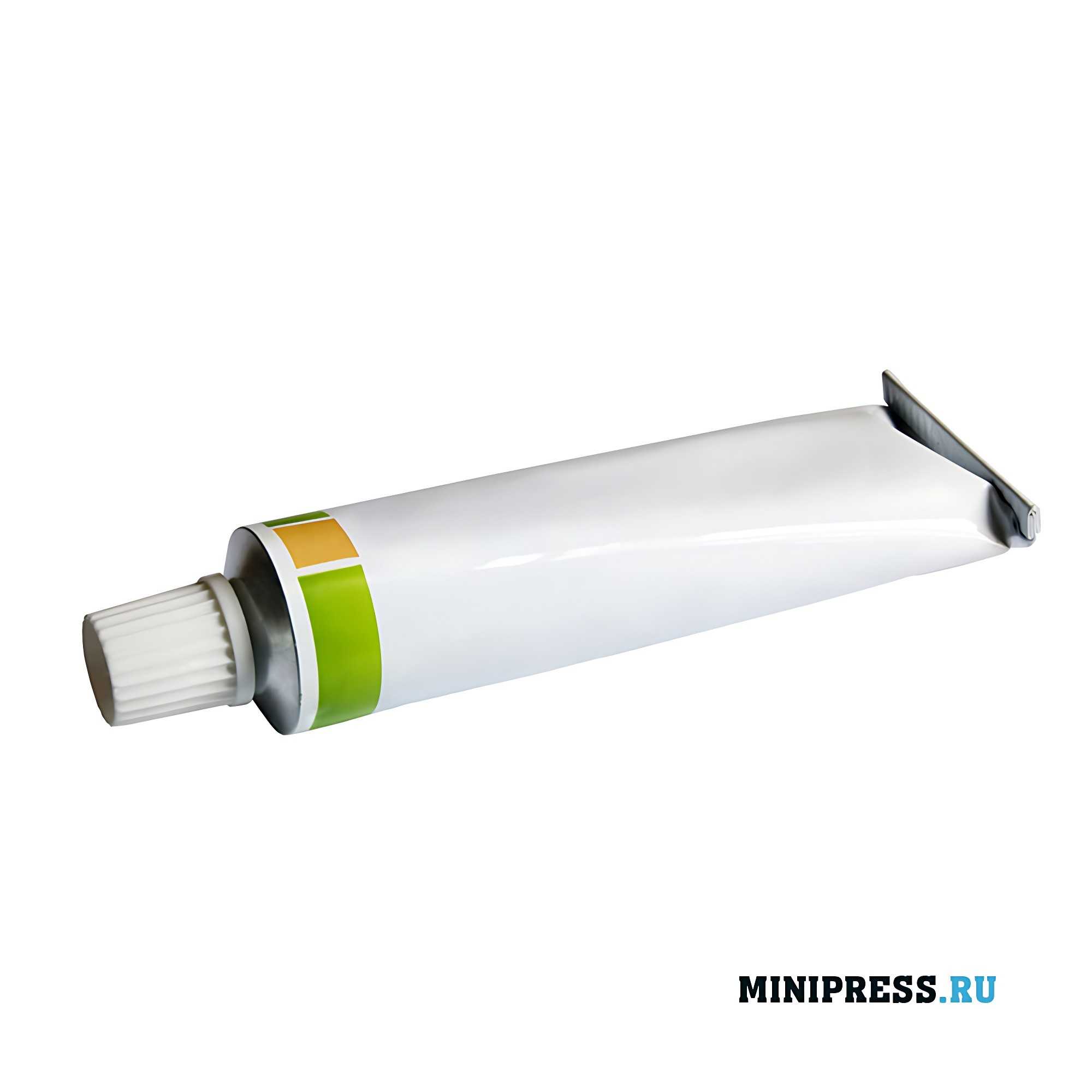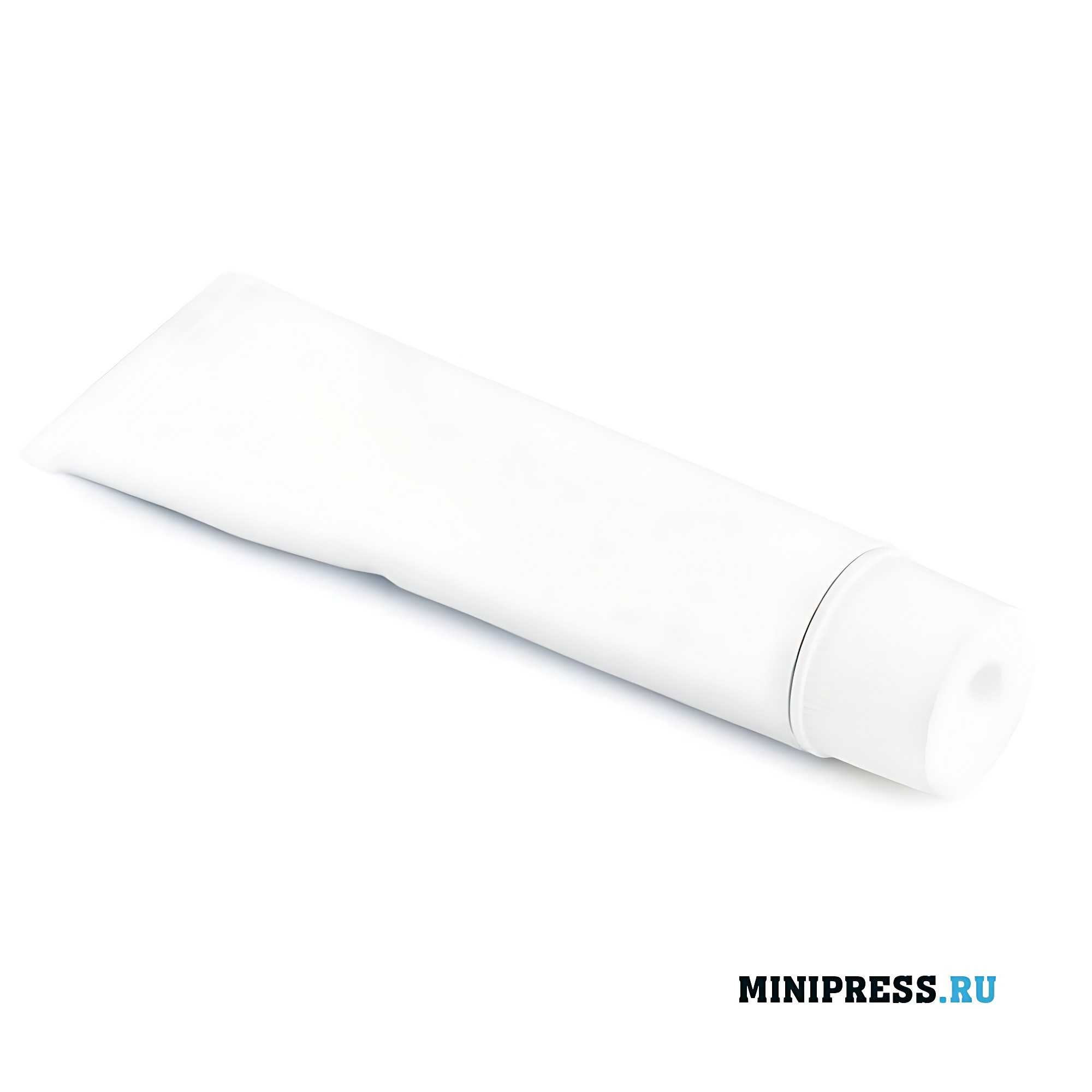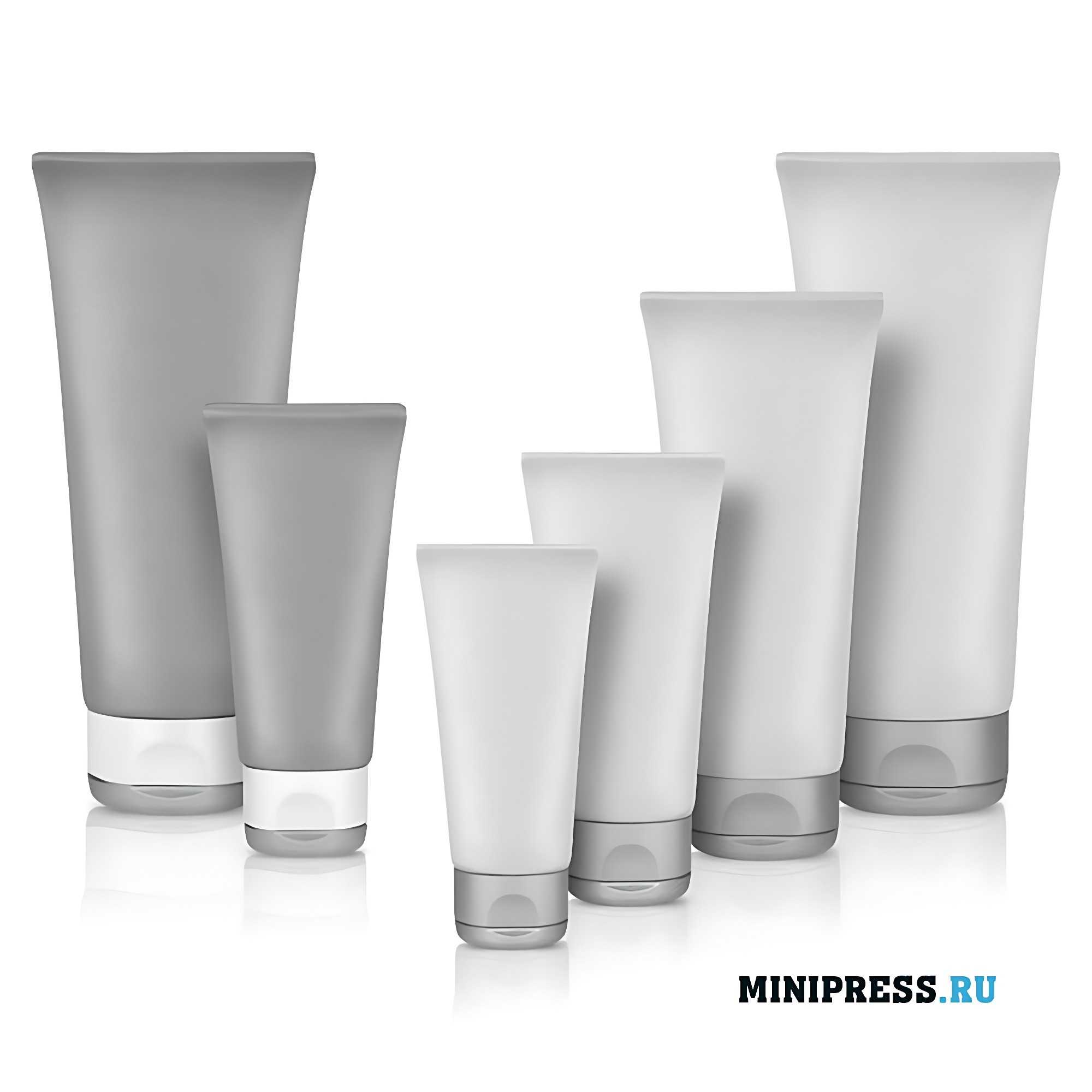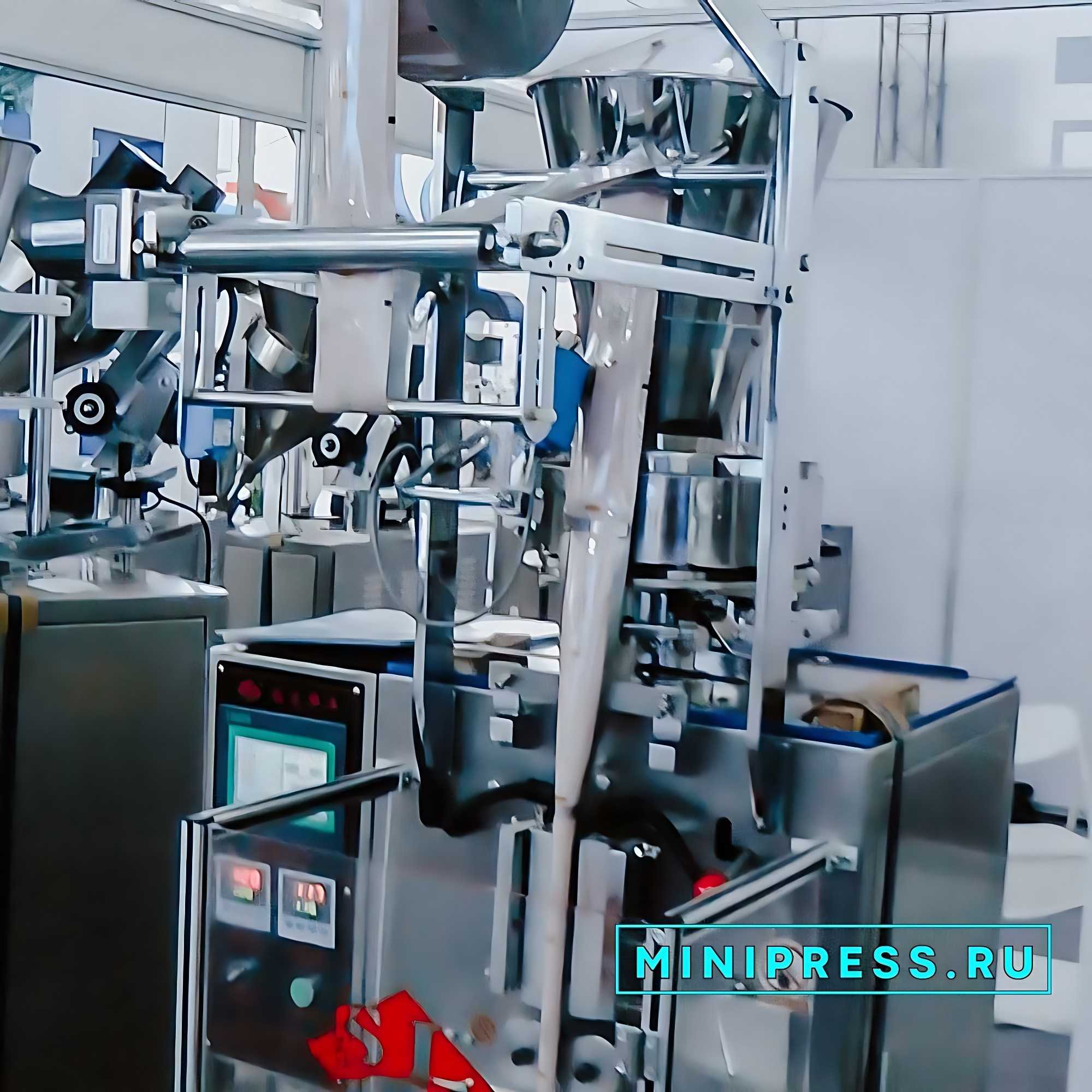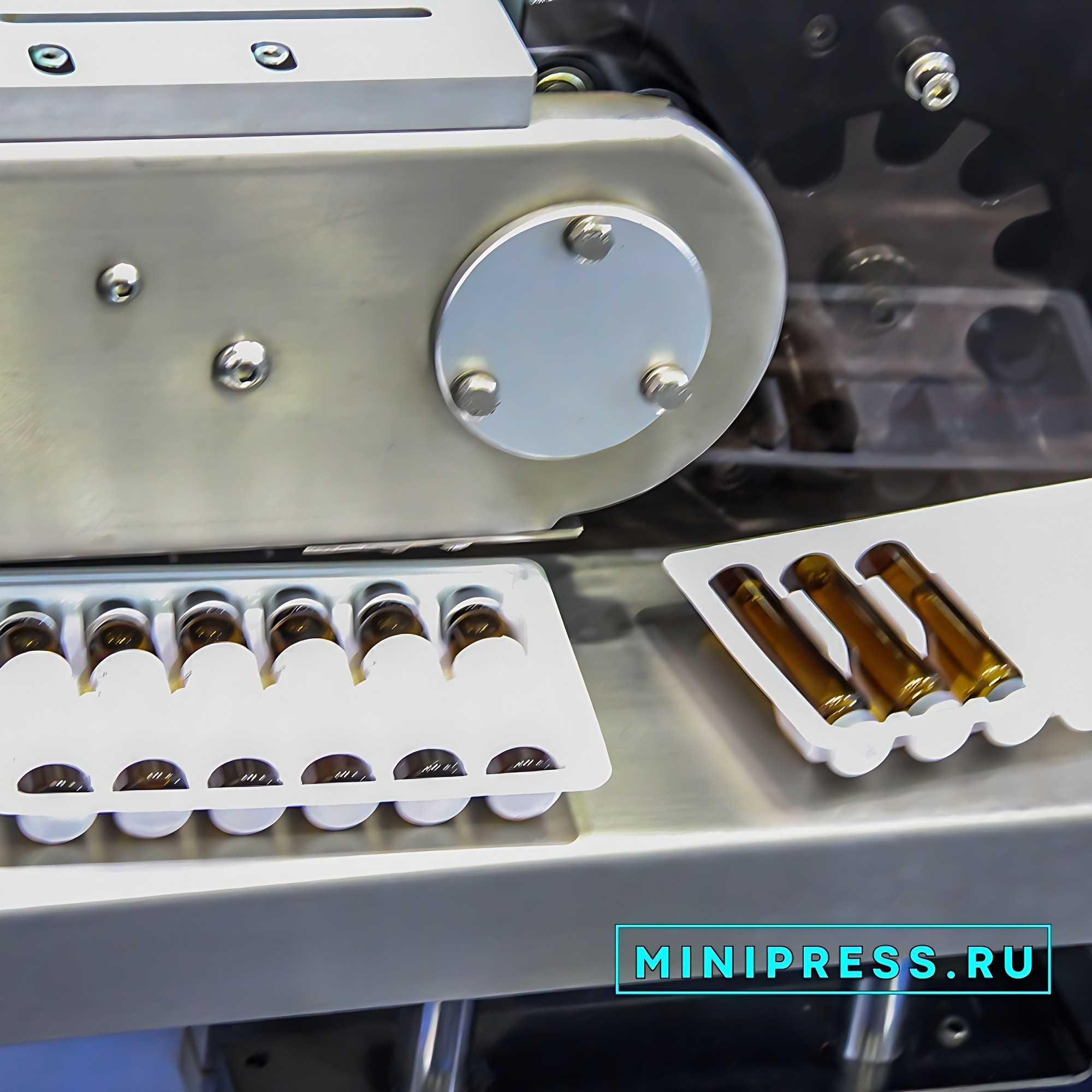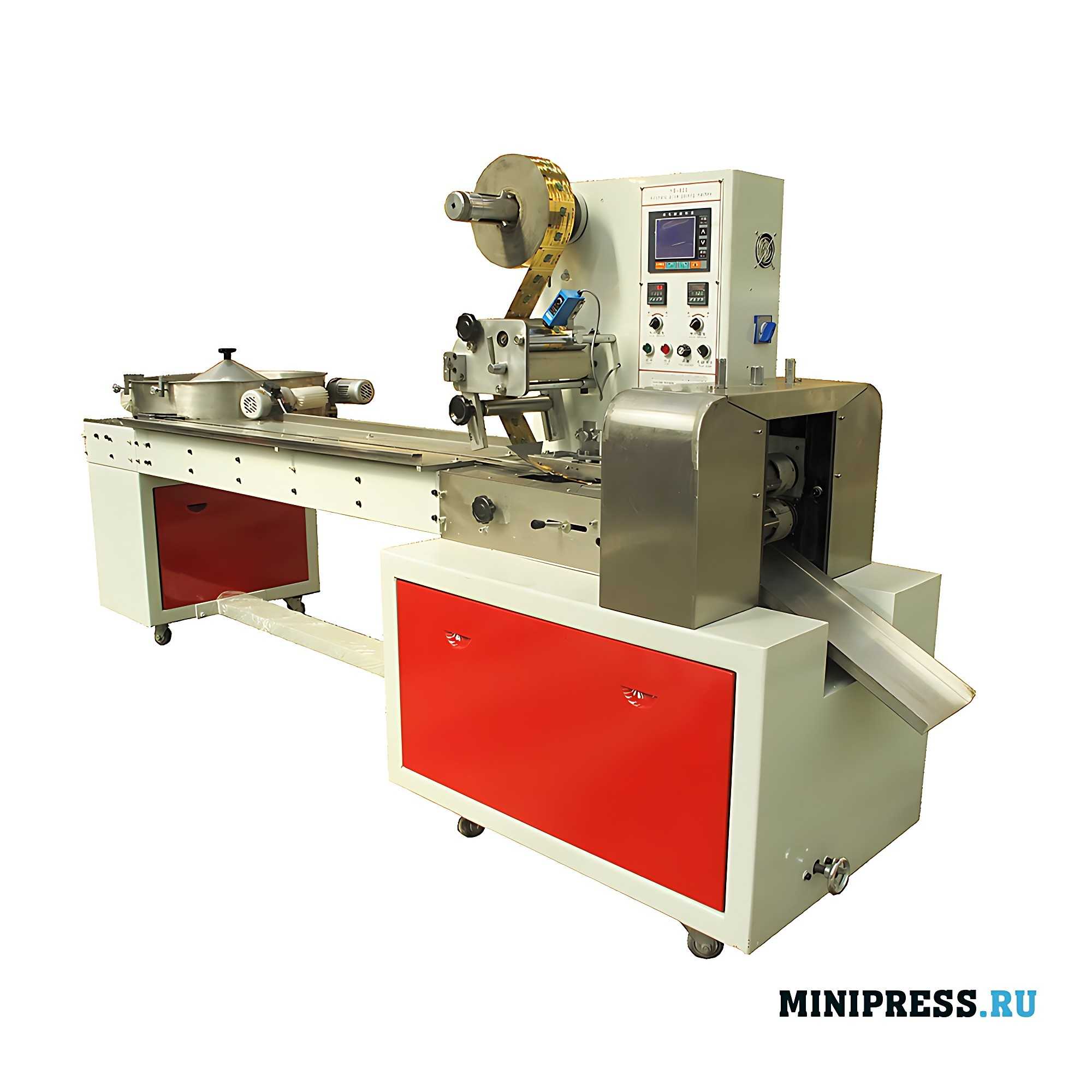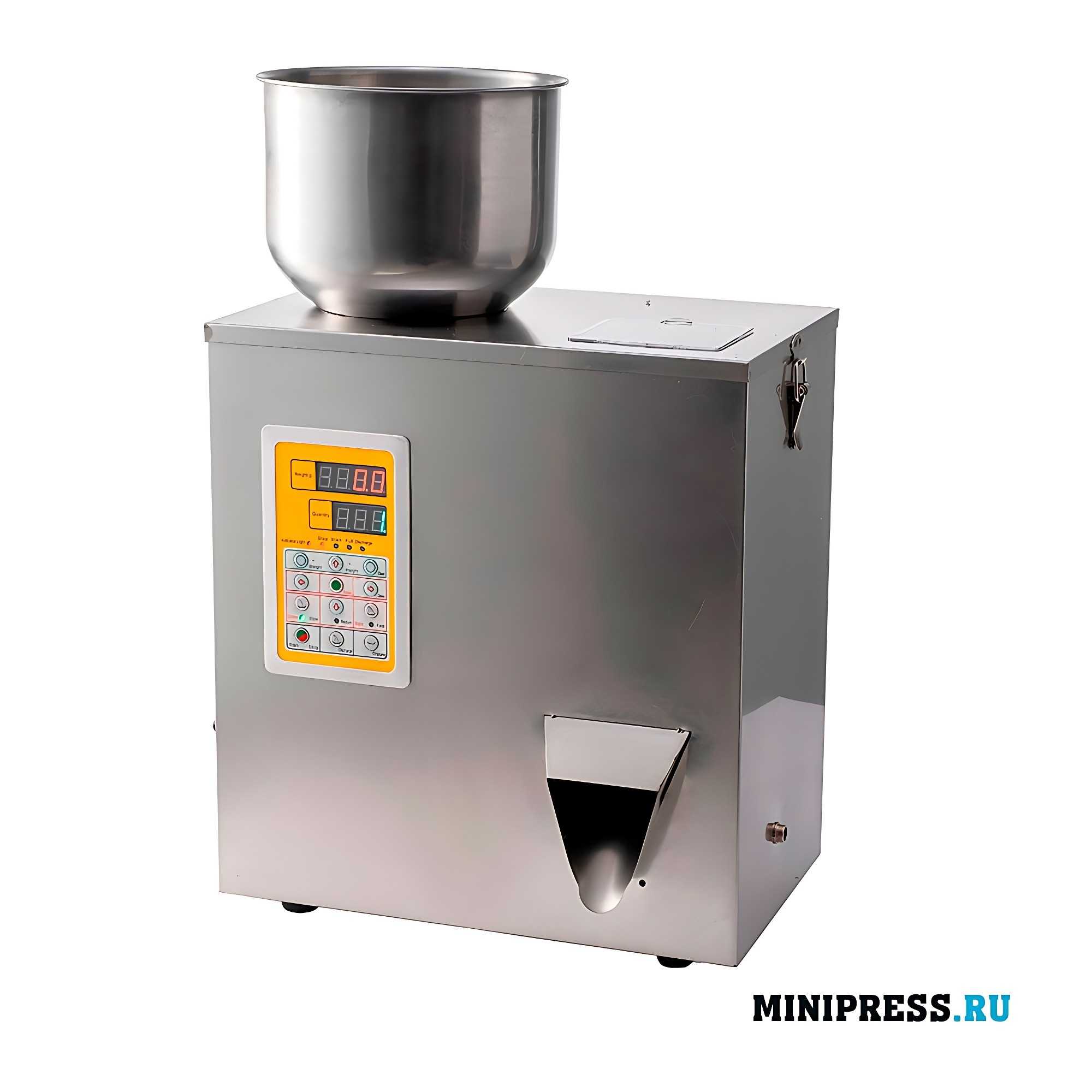 Video review of the model
Video review of the model
 Our service and customer service
Our service and customer service
Sticks are inserted into the urethra and other canals (cervix, ear canal, fistula and wound passages). They have the shape of a cylinder with a pointed end and a diameter of no more than 1 cm. The mass of the stick should be from 0.5 to 1 g.
7. Soft gelatin capsules are designed for liquid and paste-like drug substances and have a one-piece shell. They are spherical, ovoid, oblong or cylindrical in shape with hemispherical ends. There are three types of soft gelatin capsules, differing from each other in the relative hardness of the shell: soft (Capsulae gelatinosae molles), semi-soft (Perlac gelatinosae) and semi-hard (Capsulae gelatinosae durae elasticae). 8. Plasters by aggregate state can be solid and liquid. According to the degree of dispersibility, plaster masses can be alloys, solutions, suspensions, emulsions or combined systems. According to the composition of plaster masses plasters are divided into resin-wax, rubber, lead and liquid. Depending on the medical purpose and depth of therapeutic action plasters are epidermic, endermatic and dyadermatic. Epidermal patches in most cases do not contain drugs and are used mainly as a dressing material, to fix the surface of the skin bandages, convergence of wound edges, masking skin defects, protect it from various damaging factors of the environment. During the application of such a patch stops transpiration (evaporation through the skin), gas, moisture and heat exchange, resulting in softening of the skin, increasing regional blood circulation, improving the resorption of various infiltrates. These patches should be sufficiently sticky, tightly adhere to the skin and do not irritate it. Endermatic patches necessarily contain medicinal substances of different therapeutic action, such as keratolytic, depilatory and others. They are used to treat skin diseases at the site of the patch. Dyadermic patches contain medicinal substances that penetrate the skin and have a general therapeutic effect or affect subdermal tissues. Endermatic and diadermic patches are softer in consistency than epidermic patches and should provide the necessary effect of drugs, facilitating their penetration to a certain predetermined depth.
 Pharmaceutical Glossary
Pharmaceutical Glossary
 Technical specifications
Technical specifications
Hydrophobic creams use a fat base (lanolin, petroleum jelly, stearin) to which various active therapeutic substances such as vegetable oils, vitamins, hormones, fish oil and in some cases various aromatic substances or essential oils are added. The quality of a cream is not determined by its fragrance. In some cases, fragrance substances are added to creams to suppress the odor of the fat base.
Hydrophilic creams are prepared from an oil-water or water-oil-water emulsion stabilized with suitable emulsifiers. They also include colloidal dispersed systems consisting of higher fatty alcohols or acids dispersed in water or mixed water-glycol solvents, stabilized with hydrophilic surfactants.
3. Gels by type of dispersed systems are divided into hydrophobic and hydrophilic. Hydrophobic gels (oleogels) are prepared on bases of hydrophobic solvent (vaseline or vegetable oil, etc.) and lipophilic gelling agent (polyethylene, colloidal silicon dioxide, aluminum or zinc soap, etc.). Hydrophilic gels (hydrogels) are prepared on bases of water, hydrophilic mixed or non-aqueous solvent (glycerin, propylene glycol, ethyl alcohol) and hydrophilic gelling agent (carbomers, cellulose derivatives).
4. Pastes are a mixture of fats or fat-like compounds and various powdery substances. The basis of the paste may be lanolin, petroleum jelly, glycerin, linseed oil, olive oil and other vegetable oils, and more often ‘most often – their mixtures with each other. If the medicinal substances included in the paste are less than 25%, the missing amount is supplemented with indifferent powders such as starch, talc or zinc oxide. The pastes are used mainly for the treatment of affected wet skin areas as an anti-inflammatory drying agent and also in dentistry.
5. Liniments are liquid ointments. By the nature of the dispersed medium they are divided into the following groups: fat liniments, which as a dispersed medium contain fatty oils or fat-like substances (lanolin). The most commonly used are sunflower and linseed oil; alcohol liniments, which contain alcohol or tinctures (most often tincture of chilli pepper), as well as various medicinal substances; vasoliments, which are characterized by the presence of vaseline oil. Due to the high chemical inertness of vaseline oil, vasoliments show high stability during storage; soap-alcohol liniments (saponiments), as a dispersion medium they contain alcoholic solutions of soap.
 Additional information
Additional information
Saponiments can be liquid (if they contain potassium soap) or dense gel-like (if they contain sodium soap); liniments-solutions are transparent mixtures of fatty oils with essential oils, chloroform, methyl salicylate, ether, turpentine, which include various solid drugs soluble in prescribed solvents, such as camphor, menthol, anesthesin, etc.; liniments-suspensions are two-phase systems representing suspensions of powdery substances insoluble in prescribed liquids. ; liniments-suspensions are two-phase systems that are suspensions of powdery substances insoluble in prescribed liquids. Most often these liniments include zinc oxide, talc, xeroform, calcium carbonate, starch and sulfonamide preparations. As a dispersion medium, glycerin, fatty oils, alcohol, water, etc. are used. A classic example of a liniment-suspension is Vishnevsky liniment; liniments-emulsions are two-phase systems that can be water-oil or oil-water emulsion. They consist of a mixture of fatty oils with alkali or contain soap solutions. The advantages of liniments include their high biological activity, ease of application to the skin and rapid absorption. Disadvantages of liquid ointments are low stability of some of them and inconvenience of transportation.
6. Suppositories are general and localized. General action suppositories are designed for rapid absorption of active substances into the blood. Suppositories of local action are used mainly for the purpose of” local effect of the drug on a particular inflammatory process, to relieve pain, etc.
According to the place of application suppositories are divided into three groups: rectal (suppositories) – Suppositoria rectalia, vaginal – Suppositoria vaginalia and sticks – Bacilli.
Rectal suppositories are inserted into the rectum and are considered mainly as a medicinal form of general action. They are prescribed in disorders of cardiovascular activity, neuropsychiatric disorders, etc. Application in such cases is explained by the rapidity of the effect of the medicinal substances prescribed in the form of suppositories.
They can be in the form of a cone, cylinder with a pointed end or other shape with a maximum diameter of 1.5 cm. The mass of one suppository should be between 1 and 4 g. Vaginal suppositories are inserted into the vagina and used for local action. They can be spherical (balls) – globuli, ovoid” (ovuli) – ovula or in the form of a flat body with a rounded end (pessaries) – pessaria. The weight of suppositories should be within the range of 1.5 to 6 g.
Order status tracking
Good afternoon, I am hoping as agreed to get the UNIC 600A Tablet Press in Tartu ! Please comment. 11/01/2026 12:44
Good day, Evelyn! Our manager has communicated with the delivery service, the equipment will be delivered to Tartu at your address. Please let us know when you receive it. 11/01/2026 12:46
The BB-152 liquid filling machine arrived from you today, remember us ? Where's the paperwork? 11/01/2026 12:54
{The original shipping documents will be delivered to Berlin between 12:00-14:00. Please send the signed copies to us. 11/01/2026 12:54
I've been calling your office since this morning, and no one's picking up the phone. 11/01/2026 13:04
Good afternoon, James! The office will be open from 9:00 GMT. We'll be in touch. 11/01/2026 13:04
Tell me the NJ-120 automatic capsule machine went ? 11/01/2026 13:14
Daniel, good afternoon. Yes, already in the interval from 10:00-12:00 you will receive it. Taking into account the heavy weight of the equipment, we ask you to take care of unloading by forklift in advance. The transportation company does not provide unloading. Only delivery to the address. 11/01/2026 13:15
Roman hello, what about the automatic filling and sealing machine for sterile ampoules ABF-4D-1, invoice #101. 11/01/2026 13:24
Good afternoon, Lily! We are making a request to the manufacturer. Tomorrow we will send photos and video of testing to your e-mail. 11/01/2026 13:24
Dear Roman, how are you doing? Our company bought more than a year ago a filling and capping machine for penicillin vials, model XL-10. We got financing this year and want the same machine. Will you give us a discount? 11/01/2026 13:34
John, thank you. We're doing great. Of course we will give a discount to the regular customer. Delivery of equipment also in Miami ? Contact Natalia, she will send the contract and invoice. 11/01/2026 13:34
Good day , Electronic conveyor belt package weight detector DK-05 when will we receive in Dublin ? 11/01/2026 13:44
Hello Oliver, your shipment is in the customs warehouse, between 12:00-14:00 your manager Natalia will contact you. 11/01/2026 13:47
LW-35 automatic PVC+cardboard blister packaging machine has been on the road for 30 days. What news ? 11/01/2026 13:54
Hello Aurora, We are on time, the day after tomorrow a driver will contact you about unloading. 11/01/2026 13:55
I'm waiting to get my XL-12 plastic bottle filling and capping machine to Saint Petersburg, then I want to buy an automatic capsule machine model GN-28 11/01/2026 14:04
Good afternoon, Michael! On the first question - the shipment will arrive in Saint Petersburg the day after tomorrow. On the second question - the model GN-28 will be processed under a new contract ? Contact the office. 11/01/2026 14:06
Good afternoon, I am hoping as stipulated in the contract to get the UNIC 600A Tablet Press in Debrecen ! Please comment. 11/01/2026 14:14
Good day, Matthew! Our manager has communicated with the delivery service, the equipment will be delivered to Debrecen at your address. Please let us know when you receive it. 11/01/2026 14:17
- EQUIPMENT FOR FILLING HARD GELATIN CAPSULES WITH POWDER
- SPRAY DRYING EQUIPMENT FOR SUSPENSIONS
- EQUIPMENT FOR FILLING AND SEALING GLASS AMPOULES
- AUTOMATIC EQUIPMENT FOR REMOVING TABLETS AND CAPSULES FROM BLISTERS
- EQUIPMENT FOR POLISHING AND DEDUSTING TABLETS AND CAPSULES
- EQUIPMENT FOR PACKING POWDERS INTO VIALS
- EQUIPMENT FOR COUNTING AND PACKAGING TABLETS AND CAPSULES IN BOTTLES
- EQUIPMENT FOR FILLING CREAMS AND SEALING PLASTIC TUBES
- EQUIPMENT FOR PRINTING LOGO ON TABLETS AND CAPSULES
- EQUIPMENT FOR WASHING AND STERILIZING BOTTLES
- EQUIPMENT FOR THE PRODUCTION OF TABLETS
- EQUIPMENT FOR PACKAGING TABLETS AND CAPSULES IN PLASTIC BOTTLES
- HIGH-PRECISION DOSING MACHINES POWDER FILLING MACHINES
- MACHINES FOR FORMING AND FILLING PLASTIC AMPOULES
- EQUIPMENT FOR COATING TABLETS
- MACHINES FOR THE PRODUCTION OF SUPPOSITORIES
- BOTTLE FILLING AND CAPPING EQUIPMENT
- EQUIPMENT FOR EFFICIENT MIXING OF POWDERS
- EQUIPMENT FOR SCREW FEEDING OF POWDERS
- AUTOMATIC PHARMACEUTICAL CENTRIFUGES
- EQUIPMENT FOR AUTOMATIC BOTTLE FEEDING FOR FILLING LINES
- EQUIPMENT FOR VACUUM TRANSPORTATION OF POWDERS
- EQUIPMENT FOR HOMOGENIZING CREAMS AND OINTMENTS
- POWDER GRANULATION EQUIPMENT
- EQUIPMENT FOR INDUCTION SEALING OF ALU FOIL BOTTLES
- EQUIPMENT FOR PACKAGING TABLETS IN STRIPS AND TUBES
- AUTOMATIC EQUIPMENT FOR SELF-ADHESIVE LABELS ON PACKAGING
- EQUIPMENT FOR METAL DETECTOR IN GELATIN CAPSULES AND TABLETS
- EQUIPMENT FOR APPLYING THE EXPIRATION DATE AND BATCH NUMBER TO PRODUCTS
- EQUIPMENT FOR PACKAGING BULK MATERIALS IN PLASTIC BAGS
- EQUIPMENT FOR FILLING AND PACKAGING HERBAL TINCTURES
- EQUIPMENT FOR PACKAGING PRODUCTS IN A FLOW PACK
- EQUIPMENT FOR FILLING LIQUIDS IN PLASTIC AND METAL BARRELS
- EQUIPMENT FOR THE MANUFACTURE AND PACKAGING OF WET ALCOHOL WIPES
- EQUIPMENT FOR PACKAGING FOOD PRODUCTS IN DOY-PACK PACKAGES
- EQUIPMENT FOR WEIGHT CONTROL AND SORTING OF CARDBOARD BOXES WITH MEDICINE
- AUTOMATIC EQUIPMENT FOR BLISTER PACKAGING
- EQUIPMENT FOR PACKING TEA INTO TEA BAGS WITH THREAD AND LABEL
- FLOW-PACK PACKAGING MACHINES
- EQUIPMENT FOR WRAPPING CARDBOARD BOXES WITH CELLOPHANE
- EQUIPMENT FOR VACUUM PACKAGING IN PLASTIC BAGS
- EQUIPMENT FOR VIBRATING SIEVING OF POWDERS
- EQUIPMENT FOR THE PRODUCTION OF FISHING BOILIES
- SEMI-AUTOMATIC EQUIPMENT FOR BLISTER PACKAGING
- DESKTOP EQUIPMENT FOR HIGH-SPEED EMULSION PRODUCTION
- MACHINES PRINTING EXPIRATION DATE AND LOT NUMBER
- PERISTALTIC PUMPS DISPENSERS
- EQUIPMENT FOR AUTOMATIC DOSING OF CREAMS AND OINTMENTS
- EQUIPMENT FOR MIXING LIQUIDS WITH MICROWAVE HEATING
- SEMI-AUTOMATIC EQUIPMENT FOR FILLING GELATIN CAPSULES
- EQUIPMENT FOR LABORATORY TESTING OF MEDICINES
- EQUIPMENT FOR POWDERING PHARMA RAW MATERIALS
- DESKTOP EQUIPMENT FOR MIXING POWDERS
- DESKTOP EQUIPMENT FOR LIQUID DOSING
- MANUAL EQUIPMENT FOR FILLING GELATIN CAPSULES WITH POWDER
- BOTTLE FILLING AND CAPPING EQUIPMENT
- EQUIPMENT FOR PACKING POWDERS INTO VIALS
- EQUIPMENT FOR FILLING HARD GELATIN CAPSULES WITH POWDER
- EQUIPMENT FOR POLISHING AND DEDUSTING TABLETS AND CAPSULES
- EQUIPMENT FOR THE PRODUCTION OF TABLETS
- EQUIPMENT FOR PACKAGING TABLETS AND CAPSULES IN PLASTIC BOTTLES
- MACHINES FOR THE PRODUCTION OF SUPPOSITORIES
- EQUIPMENT FOR PRINTING LOGO ON TABLETS AND CAPSULES
- EQUIPMENT FOR COATING TABLETS
- SPRAY DRYING EQUIPMENT FOR SUSPENSIONS
- EQUIPMENT FOR COUNTING AND PACKAGING TABLETS AND CAPSULES IN BOTTLES
- MACHINES FOR FORMING AND FILLING PLASTIC AMPOULES
- EQUIPMENT FOR FILLING AND SEALING GLASS AMPOULES
- AUTOMATIC EQUIPMENT FOR REMOVING TABLETS AND CAPSULES FROM BLISTERS
- HIGH-PRECISION DOSING MACHINES POWDER FILLING MACHINES
- EQUIPMENT FOR FILLING CREAMS AND SEALING PLASTIC TUBES
- EQUIPMENT FOR WASHING AND STERILIZING BOTTLES
- EQUIPMENT FOR EFFICIENT MIXING OF POWDERS
- EQUIPMENT FOR SCREW FEEDING OF POWDERS
- AUTOMATIC PHARMACEUTICAL CENTRIFUGES
- POWDER GRANULATION EQUIPMENT
- EQUIPMENT FOR HOMOGENIZING CREAMS AND OINTMENTS
- EQUIPMENT FOR AUTOMATIC BOTTLE FEEDING FOR FILLING LINES
- EQUIPMENT FOR VACUUM TRANSPORTATION OF POWDERS
- EQUIPMENT FOR PACKING TEA INTO TEA BAGS WITH THREAD AND LABEL
- EQUIPMENT FOR PACKAGING BULK MATERIALS IN PLASTIC BAGS
- EQUIPMENT FOR INDUCTION SEALING OF ALU FOIL BOTTLES
- EQUIPMENT FOR VACUUM PACKAGING IN PLASTIC BAGS
- EQUIPMENT FOR FILLING LIQUIDS IN PLASTIC AND METAL BARRELS
- EQUIPMENT FOR FILLING AND PACKAGING HERBAL TINCTURES
- EQUIPMENT FOR PACKAGING FOOD PRODUCTS IN DOY-PACK PACKAGES
- EQUIPMENT FOR THE MANUFACTURE AND PACKAGING OF WET ALCOHOL WIPES
- AUTOMATIC EQUIPMENT FOR SELF-ADHESIVE LABELS ON PACKAGING
- EQUIPMENT FOR WEIGHT CONTROL AND SORTING OF CARDBOARD BOXES WITH MEDICINE
- FLOW-PACK PACKAGING MACHINES
- EQUIPMENT FOR PACKAGING PRODUCTS IN A FLOW PACK
- EQUIPMENT FOR APPLYING THE EXPIRATION DATE AND BATCH NUMBER TO PRODUCTS
- AUTOMATIC EQUIPMENT FOR BLISTER PACKAGING
- EQUIPMENT FOR PACKAGING TABLETS IN STRIPS AND TUBES
- EQUIPMENT FOR WRAPPING CARDBOARD BOXES WITH CELLOPHANE
- EQUIPMENT FOR METAL DETECTOR IN GELATIN CAPSULES AND TABLETS
- SEMI-AUTOMATIC EQUIPMENT FOR FILLING GELATIN CAPSULES
- EQUIPMENT FOR MIXING LIQUIDS WITH MICROWAVE HEATING
- EQUIPMENT FOR VIBRATING SIEVING OF POWDERS
- EQUIPMENT FOR POWDERING PHARMA RAW MATERIALS
- DESKTOP EQUIPMENT FOR HIGH-SPEED EMULSION PRODUCTION
- EQUIPMENT FOR THE PRODUCTION OF FISHING BOILIES
- DESKTOP EQUIPMENT FOR LIQUID DOSING
- EQUIPMENT FOR LABORATORY TESTING OF MEDICINES
- DESKTOP EQUIPMENT FOR MIXING POWDERS
- EQUIPMENT FOR AUTOMATIC DOSING OF CREAMS AND OINTMENTS
- SEMI-AUTOMATIC EQUIPMENT FOR BLISTER PACKAGING
- MACHINES PRINTING EXPIRATION DATE AND LOT NUMBER
- PERISTALTIC PUMPS DISPENSERS
- MANUAL EQUIPMENT FOR FILLING GELATIN CAPSULES WITH POWDER

 Deutsch
Deutsch Français
Français Italiano
Italiano Polski
Polski Español
Español Русский
Русский Português
Português 8191
8191 7690482
7690482